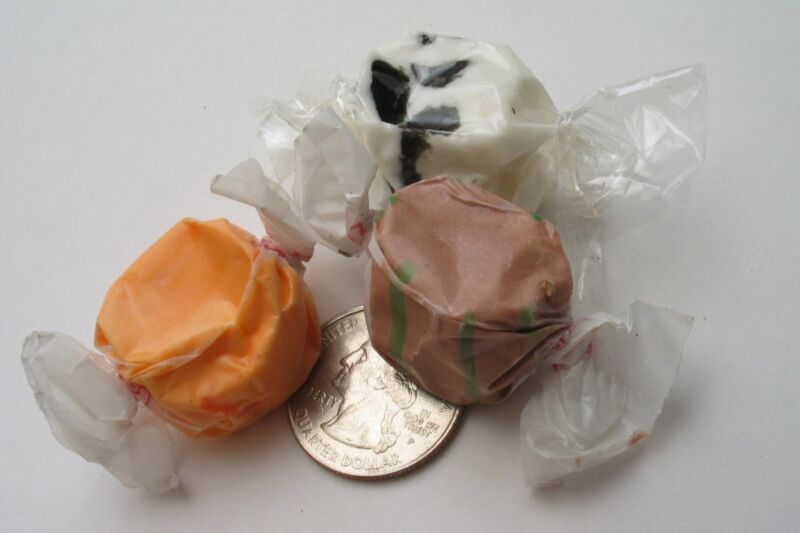Enlarge / Saltwater taffy is made by stretching and pulling the sticky candy base to create air bubbles for a fluffy and chewy confection. (credit: Wikimedia/CC BY-SA 3.0)
When San To Chan successfully defended their PhD thesis, they received a gift of saltwater taffy to celebrate and couldn’t help being intrigued by the taffy’s unusual consistency: somewhere between a solid and liquid. That led to experiments investigating the taffy’s rheology—how it deforms in response to applied forces—and how the ingredients and taffy-making process contribute to that rheology. The results are described in a new paper published in the journal Physics of Fluids.
“Taffy is a viscoelastic material—it has properties between a viscous liquid and an elastic solid,” said Chan, now a postdoc in the Fluid Interfaces Group at MIT Media Lab. “Comparing the deformation behavior of commercial taffy to those of different lab-made sugar syrups and lab-made taffies allowed us to identify the most important taffy ingredient (and material structure) that governs taffy rheology.”
It’s just the latest example of a burgeoning area of research focusing on the science of food—something that’s frequently on the menu here at Ars. For instance, in 2020, physicists examined the physics of wok-tossed fried rice and found that the secret to a perfect dish (i.e., nicely browned but not burnt) was a timely combination of side-to-side and see-sawing motions while cooking. In 2022, MIT physicists coined the term “oreology” for their study of why—when twisting two Oreo cookie halves apart—the creme filling typically sticks to only one chocolate wafer.
Read 11 remaining paragraphs | Comments

